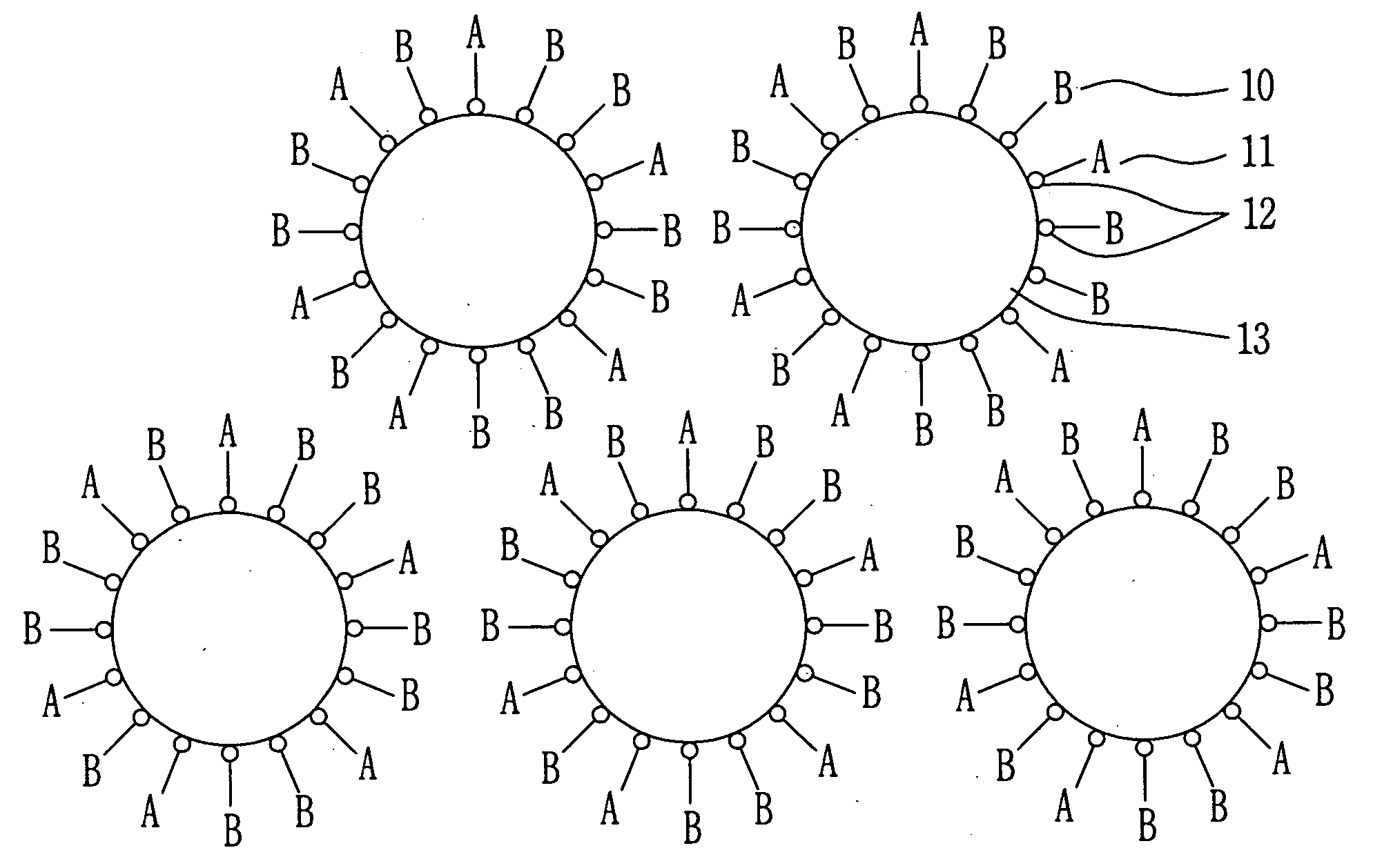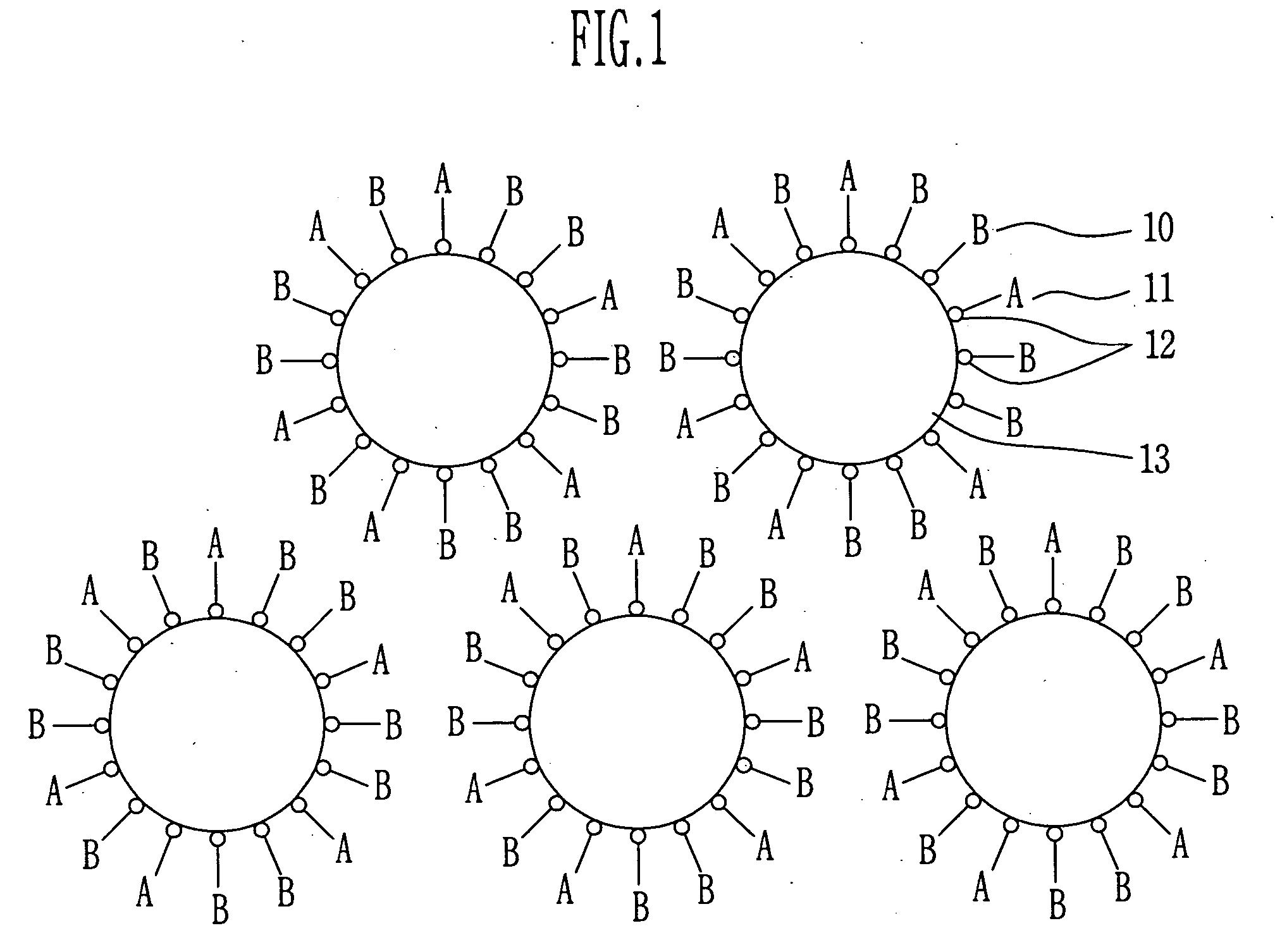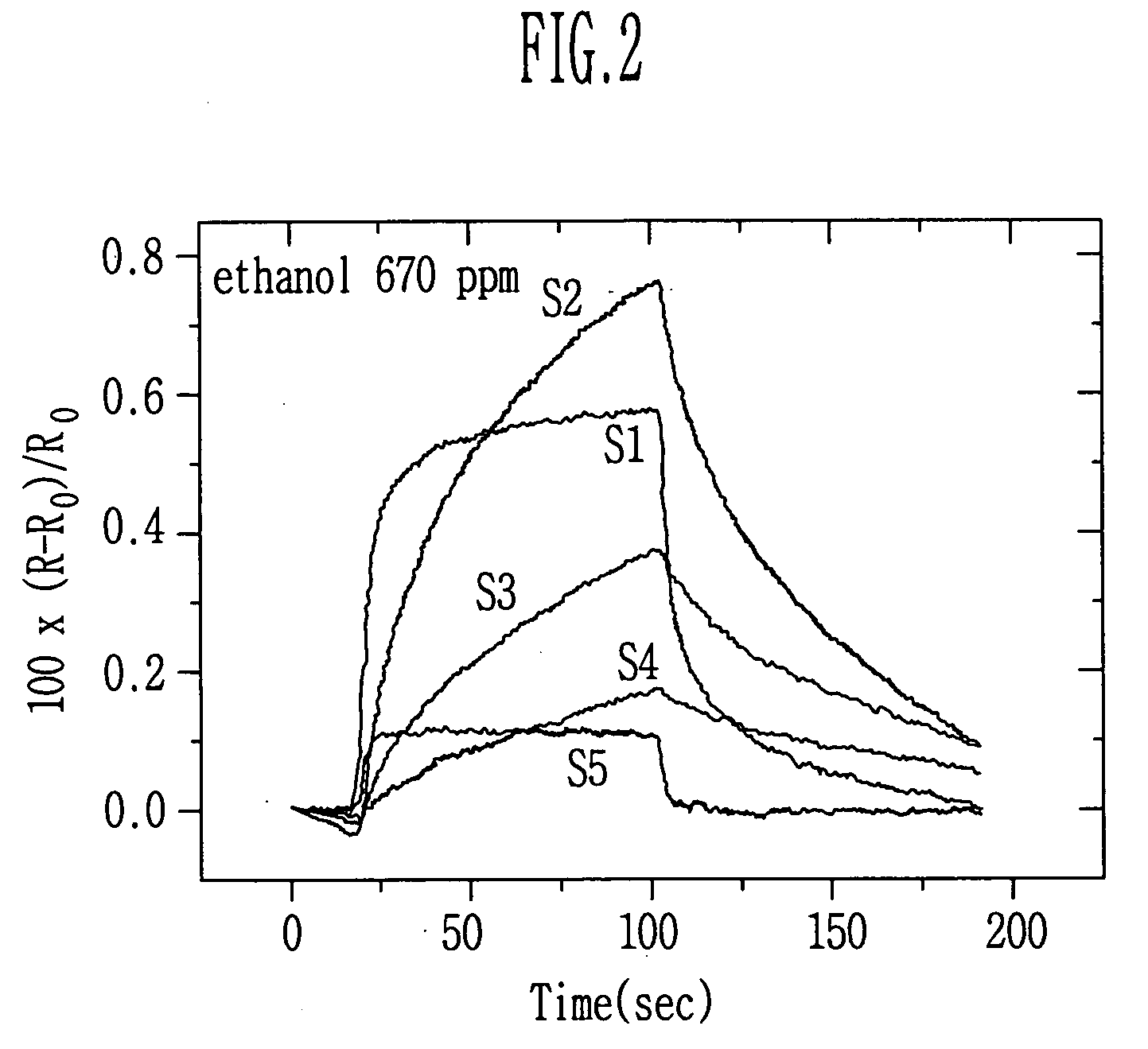Chemical sensors based on metal nanoparticle encapsulated by mixed ligand and sensor array
a metal nanoparticle and sensor array technology, applied in chemical methods analysis, instruments, chemical indicators, etc., can solve the problems of limiting the sensitivity of the sensor, the most difficult limitation of the sensor, and the poor sensitivity toward polar molecules, etc., to achieve reliable sensitivity characteristics, high sensitivity, and high stability
- Summary
- Abstract
- Description
- Claims
- Application Information
AI Technical Summary
Benefits of technology
Problems solved by technology
Method used
Image
Examples
embodiment
[0052] A mixed ligand metal nanoparticle chemical sensor according to the present invention may be manufactured by a conventional known synthesis method. That is, it may be manufactured by a method disclosed in the document [M. Brust, M. Walker, D. Bethell, D. J. Schiffrin, R. Whyman, J. Chem. Soc., Chem. Commun. (1994) 801-802.] and a document [Michael J. Hostetler, Stephen J. Green, Jennifer J. Stokes, and Royce W. Murray “Monolayers in Three Dimensions: Synthesis and Electrochemistry of omega-Functionalized Alkanethiolate-Stabilized Gold Cluster Compounds” J. Am. Chem. Soc. 1996, 118, 4212-4213.]
embodiment 1
[0055] Manufacturing a mixed ligand gold nanoparticle (S1) with a ratio of toluene: 4-mercaptophenol=1:0.22
[0056] The single toluene ligand metal nanoparticle manufactured in the first embodiment and 4-mercaptophenol of 13.9 mg were mixed and stirred in a THF solvent of 100 mg to synthesize a toluene-4-mercaptophenol mixed ligand gold nanoparticle product. After completing the reaction, the product was dispersed and filtered in diethyleter and the solvent was evaporated under the reduced pressure to obtain the final toluene-4-mercaptophenol mixed ligand gold nanoparticle (S1).
embodiments 2 to 4
[0057] Sensors having various ligand compositions as shown in Table 1 were manufactured by changing an amount of mercaptophenol in the same manner as embodiment 1.
TABLE 1Molar ratio betweenEmbodimentSensorligand —PhCH3 and —PhOHEmbodiment 1S11.0:0.22Embodiment 2S21.0:0.64Embodiment 3S31.0:1.92Embodiment 4S41.0:10.0Comparative Example 1S51.0:0.0
PUM
| Property | Measurement | Unit |
|---|---|---|
| diameter | aaaaa | aaaaa |
| diameter | aaaaa | aaaaa |
| conductivity | aaaaa | aaaaa |
Abstract
Description
Claims
Application Information
 Login to View More
Login to View More - R&D
- Intellectual Property
- Life Sciences
- Materials
- Tech Scout
- Unparalleled Data Quality
- Higher Quality Content
- 60% Fewer Hallucinations
Browse by: Latest US Patents, China's latest patents, Technical Efficacy Thesaurus, Application Domain, Technology Topic, Popular Technical Reports.
© 2025 PatSnap. All rights reserved.Legal|Privacy policy|Modern Slavery Act Transparency Statement|Sitemap|About US| Contact US: help@patsnap.com



